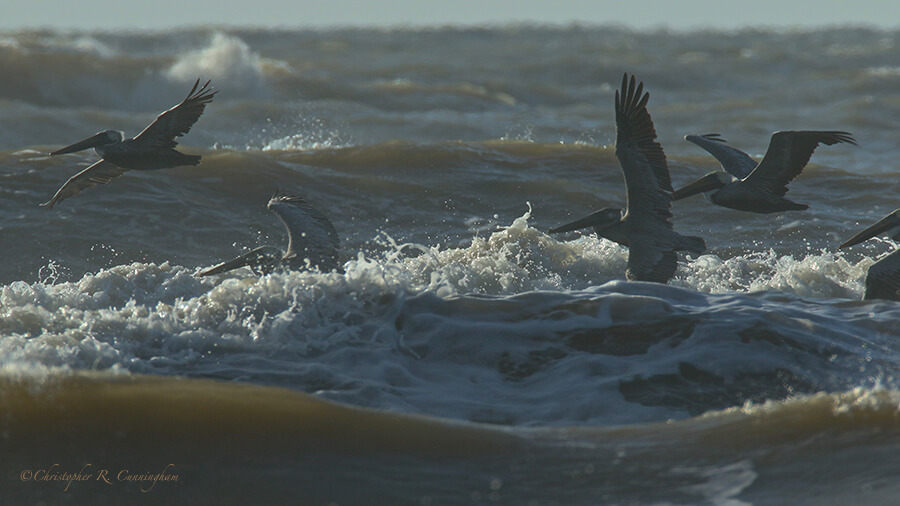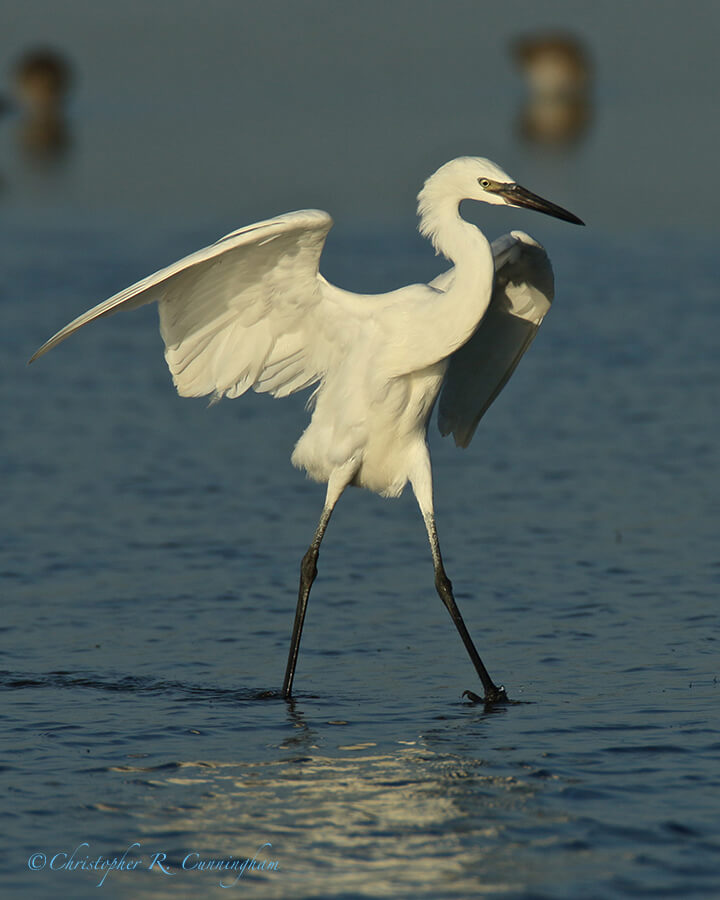We climb a ridge, and a shout of surprise involuntary arises from our lips as we find the waters replete with strange animals, and the sun above us darkened by the wings of great flying dragons . . . . —Charles H. Sternberg (Popular Science News, December, 1898)

Last Sunday we took an excursion to Bryan Beach and the lagoons behind. On this day, the seas were rough, and I watched in awe as Brown Pelicans sailed through the troughs of a churning waterscape. I couldn’t help but think of the spectacular scenes of the Late Cretaceous Epoch painted by Charles R. Knight (at the absolute height of his powers) for the Field Museum of Natural History in Chicago in the late 1920’s—especially the oft-reprinted breaching mosasaur and turtle with Pteranodon skimming the giant swells in “turquoise, gray, and rose” (Knight’s words).
I like to imagine that places like Bryan Beach and environs are not unlike much of what Midcontinent North America was like when the Western Interior Seaway connected the Gulf of Mexico with the Arctic. But of course there are tremendous differences: Texas Gulf Coast bays, for example, typically have only about 15 cm of tidal variation in sea-level, but mathematical models of the Western Interior Seaway suggest that it was subject to around 0.5-1.0 m of tidal variation along the southern boundary (e.g., Erickson and Slingerland, 1990).
To my imagination, this suggests vast areas of tidal channels, mudflats, and marshes dotted with countless millions of birds hunting, fishing, and probing for prey. But except for birds like Hesperornis (and kin) and Ichthyornis what these birds were like remains largely a mystery as only fragmentary remains assigned to around twenty or so genera are known.

The main reason I frequent the shallow lagoons behind Bryan Beach (other than reverie) is that this area is a reliable spot to see Reddish Egrets, both dark and white morphs. On this trip, we saw both color phases. I was especially excited to see Reddish Egrets hunting alone and in mixed flocks of waders and shorebirds. At one point, a large group of White Ibises, Snowy Egrets, Lesser Yellowlegs, and Dowitchers encountered a school of small fish and swept across the lagoon together in a communal fishing “drive.” Sometimes the Reddish Egrets broke off from the flock and fished alone—although sometimes a few Snowy Egrets, Lesser Yellowlegs, or Dowitchers shadowed them.
With a little imagination it’s easy to envision such scenes occurring along the tidal mudflats and lagoons of the Western Interior Seaway. Squinting at the above scene, it might be easy to believe that you are seeing the Cretaceous cousins of today’s birds. But sorting out the taxonomic nightmare of what you are seeing would have been a bit dicier in the Late Cretaceous than it is today. Feathers, it seems, were widely distributed among dinosaurs, so many of those little feathered bipeds hunting and fishing across those mudflats were not close modern bird relatives at all, but rather dinosaurs, or perhaps even more likely, members of the strictly Mesozoic avian groups that perished at the end of the Cretaceous Period.

Finally, sometimes lost in my imaginary Cretaceous, I have to remind myself that I can stray to the waters’ edge—no fear in our time of being confused with a small dinosaur . . . and a mosasaur bolting from the shallows and dragging me kicking and screaming into the surf.
Reference
Erickson, M.C. and Slingerland, R. 1990. Numerical simulations of tidal and wind-driven circulation in the Cretaceous Interior Seaway of North America. Geological Society of America Bulletin 102 (11): 1499-1516.
©2015 Christopher R. Cunningham. All rights reserved. No text or images may be duplicated or distributed without permission.